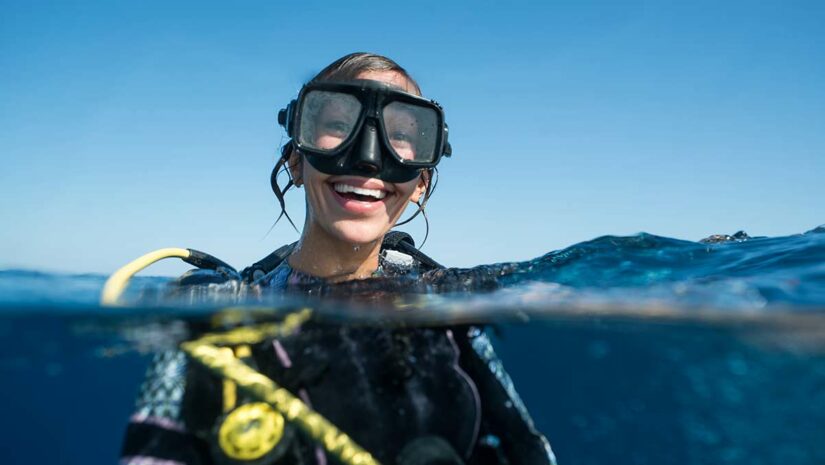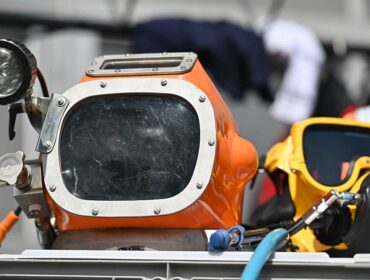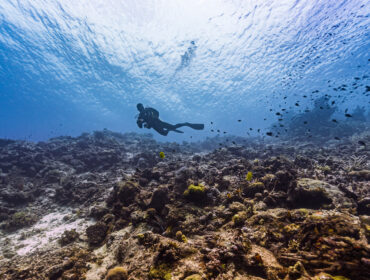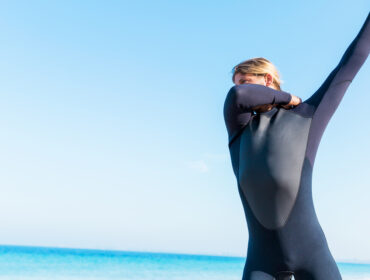The ocean’s allure has captivated human imagination for centuries. As we venture beneath its waves, the diving mask stands as an essential tool, acting as a window to the vibrant world below. Ensuring clear vision, they allow divers to navigate, communicate, and fully appreciate the marine environment. Whether you’re a beginner diver just getting your feet wet or a seasoned pro embarking on technical diving adventures, a clear field of vision is crucial. The magic of marine life observation, from spotting tiny nudibranchs to encountering majestic manta rays, depends on your mask’s quality.
At its core, the purpose of a diving mask is simple, yet essential: it provides an air space in front of our eyes, allowing us to see clearly underwater. But there’s more to these masks than meets the eye. They’re a blend of functional design, cutting-edge materials, and diver-centric features, all crafted to make your underwater adventures unforgettable.
Why is a Good Diving Mask Important?
- Safety considerations: A quality diving mask ensures that water doesn’t seep in, allowing you to focus on the beauty below and keep potential hazards at bay.
- Clarity and visibility: Unlike goggles, a diving mask covers both your eyes and nose. This design enables you to see clearly underwater, as it creates an air pocket in front of your eyes. Therefore, clear lenses and a good seal are important for unobstructed views of the underwater world.
- Comfort during dives: An ill-fitting mask can be distracting. Ensuring you have a comfortable fit is key for longer and more enjoyable dives.
- Equalizing Pressure: Covering the nose allows divers to equalize pressure by blowing out while pinching their nostrils. This step is crucial to avoid discomfort or injury.
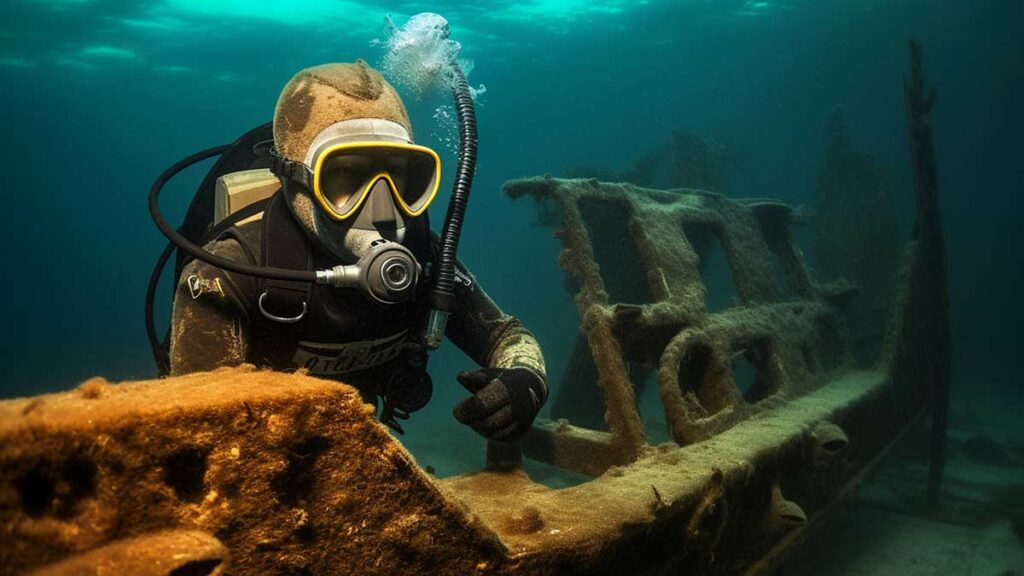
Types of Diving Masks and Their Features
The most important thing to remember is that the scuba diving mask should fit properly over your face with a good seal in order to ensure optimal underwater vision. However, here are the few things to consider when choosing a mask. The following information will help you make an informed decision on which type of mask is best suited to your needs.
Lens Type
There are four different types of lenses that are used for different diving purposes.
Single Lens
As the name suggests, a single lens mask has one lens that goes over the entire width of the mask covering both the eyes, without any interruptions in the cut. The uninterrupted pane of glass offers an expansive view, letting divers feel more connected to their surroundings. It’s perfect for those who want fewer obstructions and more scenery.
Pros and cons of a single lens mask:
- Since it has no nose bridge, they provide a wide and clear range of vision. This offers unobstructed, panoramic view of the underwater world. It is a big plus when looking straight-on at close subjects and is ideal for divers who want a clear, broad view without any interruptions.
- These lenses are easier to defog as they do not have as many edges and there is no need to defog each lens separately.
- Higher air volume in the masks make it more difficult to equalize.
Single Lens Diving Masks at Scuba.com
Double Lens
These are the most common type of diving masks. Separated by a nose bridge, double lens diving masks may seem traditional but come with a perk: they’re often more compact and can be fitted with prescription lenses. So, for those divers who wear glasses, prescription diving mask might be your go-to choice.
Pros and cons of a double lens mask:
- These are popular for divers who require prescription lens since they allow for different prescription for each eye. They’re customized to your prescription, ensuring you don’t miss out on any underwater detail.
- The low volume of air in the mask makes it easier to equalize at depth, as well as reduce mask squeeze. Masks with smaller air spaces (low-volume masks) require less frequent equalization and are easier to clear if they get flooded with water.
- The teardrop lens shape optimizes looking down.
- The dividing bar may disturb the central vision.
Double Lens Diving Masks at Scuba.com
Tri Lens
Designed with three lenses, these diving masks have a large single lens with two small side windows on each side of the mask. This gives the mask an open, airy feel with a clear view on the side.
Pros and cons of a tri lens mask:
- It enhances the peripheral vision and improved depth perception.
- Its airy feel might help divers prone to claustrophobia.
- The intersection between the front and side lenses might create a blind spot.
Tri Lens Diving Masks at Scuba.com
Full Face
More than just a mask, it’s an experience. As the name suggests, a full face mask covers the entire face. Instead of a separate mask that covers the eyes and nose and a separate regulator attached to your mouth, this mask combines both the functions. It integrates the regulator and often includes communication systems, making it ideal for professional and technical dives. They are generally used by serious commercial divers, cold water divers, and videographers—not by recreational divers. It’s a game-changer for those who prioritize comfort and seamless communication underwater.
Pros and cons of a full face mask:
- This mask allows divers to inhale and exhale normally, allowing them to concentrate on their surroundings.
- Its curved lens provides 180-degree views.
- It provides less jaw fatigue as it eliminates the need to hold on to the mouthpiece.
- It has optimal underwater communication thanks to integrated underwater intercom.
- The higher volume in the mask leads to higher buoyancy. This means more strength is needed to maintain the body in the correct position as it tends to raise quicker.
- They typically have bulky designs and are harder to clear due to large surface area.
Full Face Diving Masks at Scuba.com
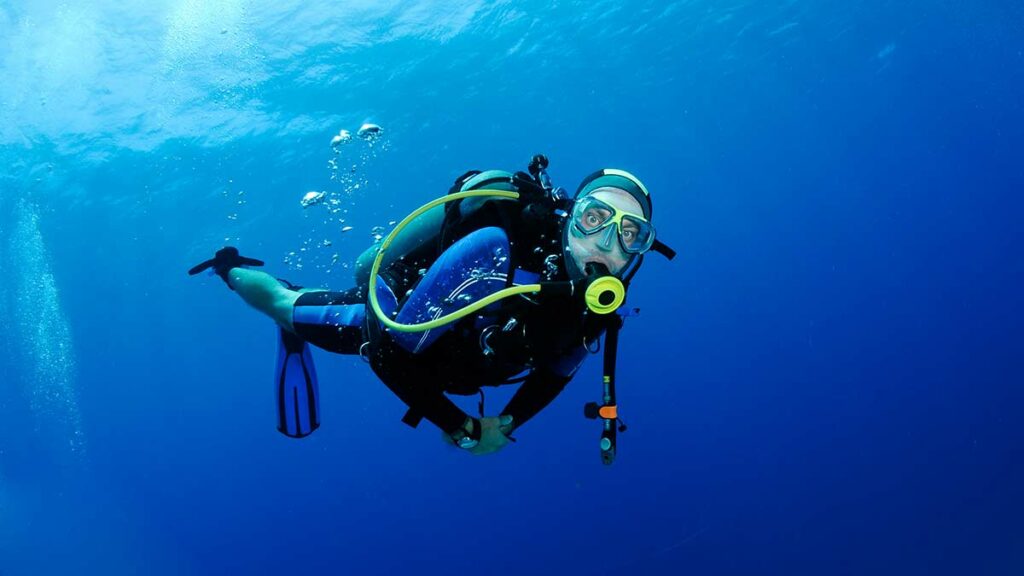
How to Choose a Diving Mask
Consider the following features when choosing a diving mask
Skirt
A mask’s silicone skirt creates a seal against your face. Silicone is the top choice due to its longevity and comfort. Avoid cheaper PVC options and look for high quality silicone as it ensures a snug fit, preventing water leaks. The softer and more flexible the silicone, the better the fit. Silicone is also durable and resists degradation from sun and saltwater.
Silicone skirt comes in many different colors. They can be black, tinted or transparent. Transparent skirts allow for more light. It is a popular option for beginners who like an open and airy feeling and more peripheral vision. Dark skirts are preferred by underwater photographers because they block glares and reflective lights. Skirts also come in fun and bright colors. They can be coordinated with the rest of your dive gear to dial up your underwater style quotient.
Frame vs. Frameless
Majority of diving masks have a frame and all the components of the mask are attached to the frame. Framed masks can be taken apart and cleaned separately. It’s an advantage because when a single part breaks, you can replace it instead of having to buy a new mask.
Frameless masks have the silicone skirt moulded around other parts of the mask. These masks sit closer to the face, providing a wider field of vision. Its sleek and modern design is both functional and stylish. However, it can’t be taken apart for cleaning and prescription lenses cannot be installed in these masks.
Lens Material
Clarity is king while underwater. Always look for masks with tempered glass lenses. Not only are they resistant to scratches and shattering, but they also offer unparalleled clarity compared to their plastic counterparts. For those who venture into bright, tropical waters, masks with UV protection can help shield your eyes
Adjustable Straps
Ever felt the pinch of a too-tight mask or the annoyance of one that keeps slipping? Adjustable straps solve that. A good strap will offer micro-adjustments, ensuring a perfect, headache-free fit every time.
Low Volume Design
A close-fitting mask can be a diver’s best ally. It’s easier to equalize, clears faster, and feels more integrated with the face. It is especially beneficial for free divers who need rapid equalization.
However, the most important thing to remember is that, regardless of its type, the mask should properly fit your face without pinching or leaving red marks. Test various sizes to find your ideal fit. Gently press the mask to your face and inhale through your nose. If it sticks without the strap, you have a good seal!
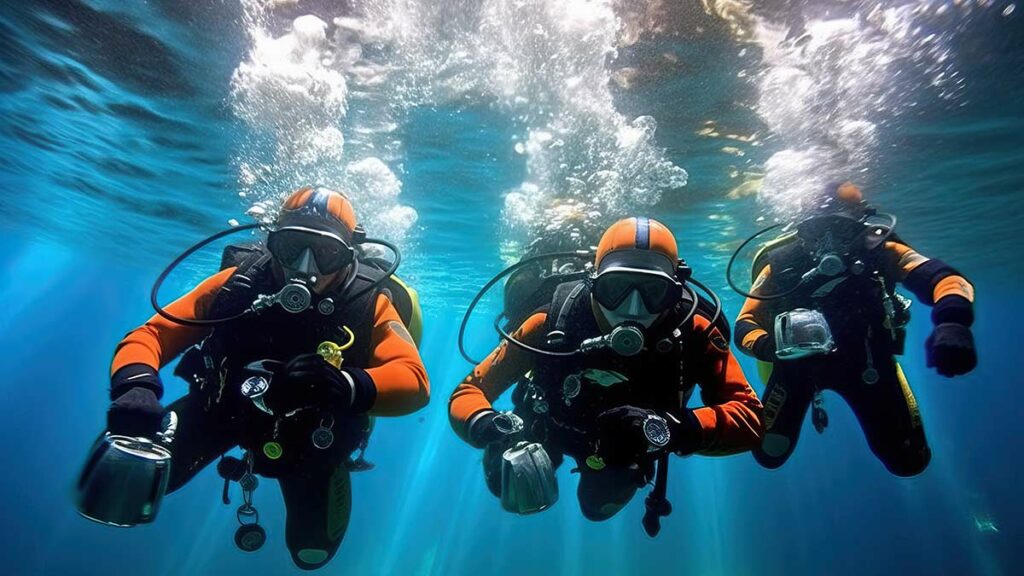
Maintenance and Care for Diving Masks
Just like any cherished possession, a little love and care can keep your scuba diving mask in pristine condition:
- Rinse after Use: It sounds basic, but it’s fundamental. Whether you’ve been in a chlorinated pool or the salty sea, a fresh water rinse is essential. It keeps your mask free from residue, ensuring clarity and longevity.
- Avoid Direct Sunlight: It might be tempting to leave your mask on the boat deck or car dashboard, but resist the urge. Prolonged exposure to sunlight can cause the silicone to become brittle or discolored.
- Regularly Check Seals: A little vigilance goes a long way. Periodically inspect your mask’s seals and edges. This proactive approach ensures you catch any wear or potential leaks before they become a problem.
- Defogging your Diving Mask: There are several sprays, gels, and drops specifically marketed to defog snorkel and scuba masks. Put enough product on your mask’s lenses to coat them, swish it around, and then rinse your mask in salt or freshwater once before diving with it. This will keep your dive mask clear so that you can enjoy a fog-free dive.
Conclusion: The Dive into the Deep
A scuba diving mask is more than just equipment. They are the lenses through which we witness the underwater ballet of marine life, the vibrant corals, and the mysteries of the deep. With the right diving mask, maintained well, every dive becomes a vivid memory, a story waiting to be shared. By understanding the various types and key features, you’re well-equipped to make an informed decision. Remember, diving isn’t just about the places you go; it’s also about the dive gear that takes you there. So, gear up, choose wisely, and let the oceans narrate their tales.

